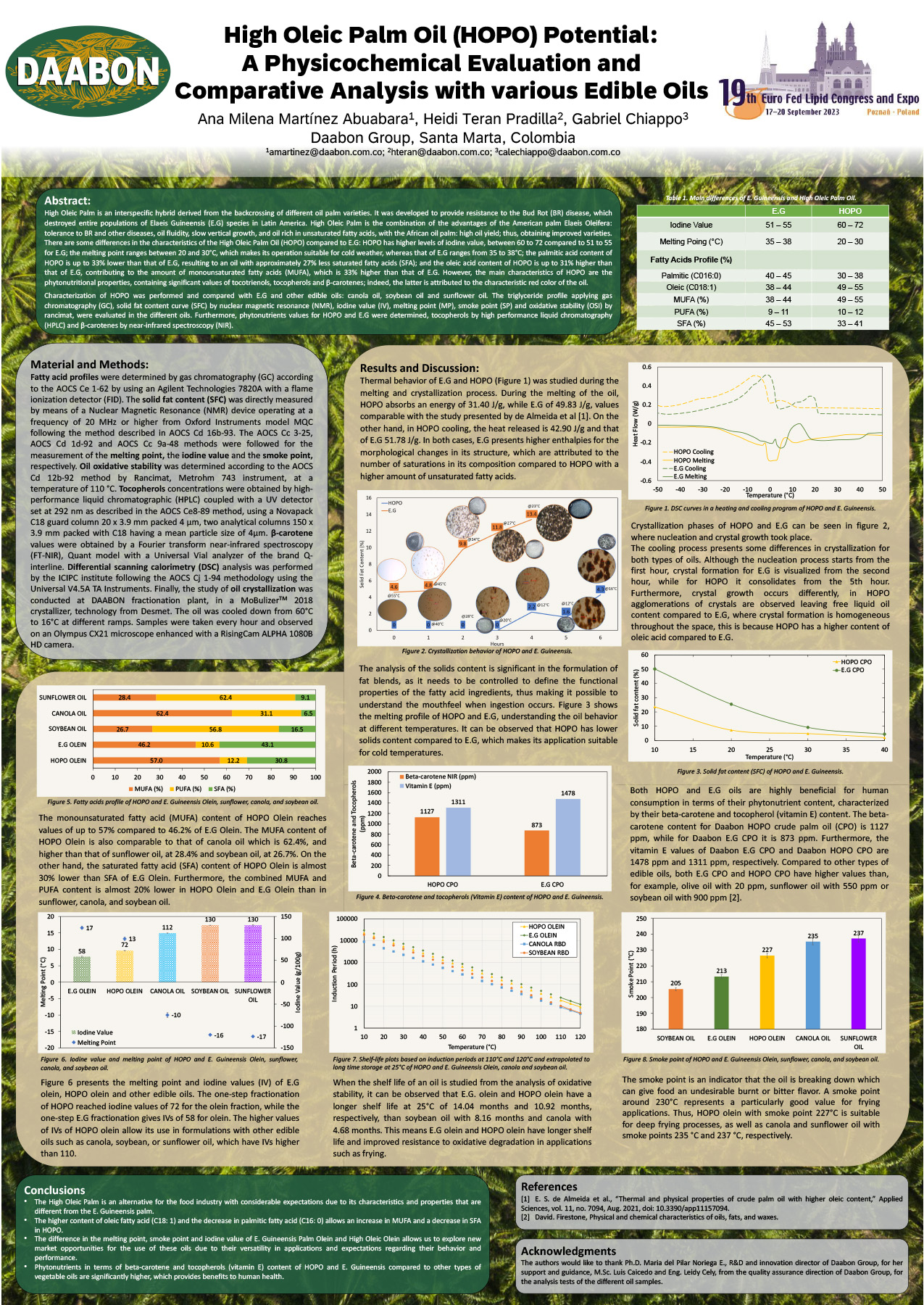High Oleic Palm Oil (HOPO) is an interspecific hybrid derived from the backcrossing of different oil palm varieties. It was created to provide resistance to the Bud Rot (BR) disease, which destroyed entire populations of Elaeis Guineensis (E.G) species in Latin America. HOPO is the combination of the advantages of the American palm Elaeis Oleifera: tolerance to BR and other diseases, oil fluidity, slow vertical growth, and oil rich in unsaturated fatty acids, with the African oil palm: high oil yield; thus, obtaining improved varieties. There are some differences in the characteristics of HOPO compared to E.G: HOPO has higher levels of iodine value, between 60 to 72 compared to 51 to 55 for E.G; the melting point ranges between 20 and 30°C, which makes its operation suitable for cold weather, whereas that of E.G ranges from 35 to 38°C; the palmitic acid content of HOPO is up to 33% lower than that of E.G, resulting to an oil with approximately 27% less saturated fatty acids (SFA); and the oleic acid content of HOPO is up to 31% higher than that of E.G, contributing to the amount of monounsaturated fatty acids (MUFA), which is 33% higher than that of E.G. However, the main characteristics of HOPO are the phytonutritional properties, containing significant values of tocotrienols, tocopherols and β-carotenes; indeed, the latter is attributed the characteristic red color of the oil.
Characterization of HOPO was performed and compared with E.G and other edible oils: canola oil, soybean oil and sunflower oil. The triglyceride profile applying gas chromatography (GC), solid fat content curve by nuclear magnetic resonance (NMR), iodine value, melting point, smoke point and oxidative stability by rancimat, were evaluated in the different oils. Furthermore, phytonutrients values for HOPO and E.G were determined, tocopherols by high performance liquid chromatography (HPLC) and β-carotenes by near-infrared spectroscopy (NIR).
